How Far Can You Sail Up the Hudson River? (5 Boat Types)
The Hudson River is a 315-mile river that flows from north to south, primarily through eastern New York State. Some boats are better suited for navigating this river's tidal currents and shallow waters than others. In this article, we will explore how far you can sail up the Hudson River based on five different types of boats.
A kayak or canoe can paddle the Hudson River up to 300 miles from the river's source to its mouth at New York Harbor. Meanwhile, a cruise ship can travel more than 150 miles, depending on the ship's size and its draft, as well as the depth of the river.
A sailboat can travel up to 160 miles on the Hudson River, while a motorboat can travel up to 200 miles. Let's see what factors limit these different types of boats from sailing up the Hudson River.
Summary
- Kayaks and canoes can explore the Hudson River further due to their small size and maneuverability, as long as the paddlers have enough endurance and supplies.
- Sailboats can travel up to 150 miles on the Hudson River but are limited by factors such as tides, bridges, and weather conditions along the river.
- Houseboats are spacious and can accommodate a large number of people, but they have a limited range and are not designed for long-distance travel.
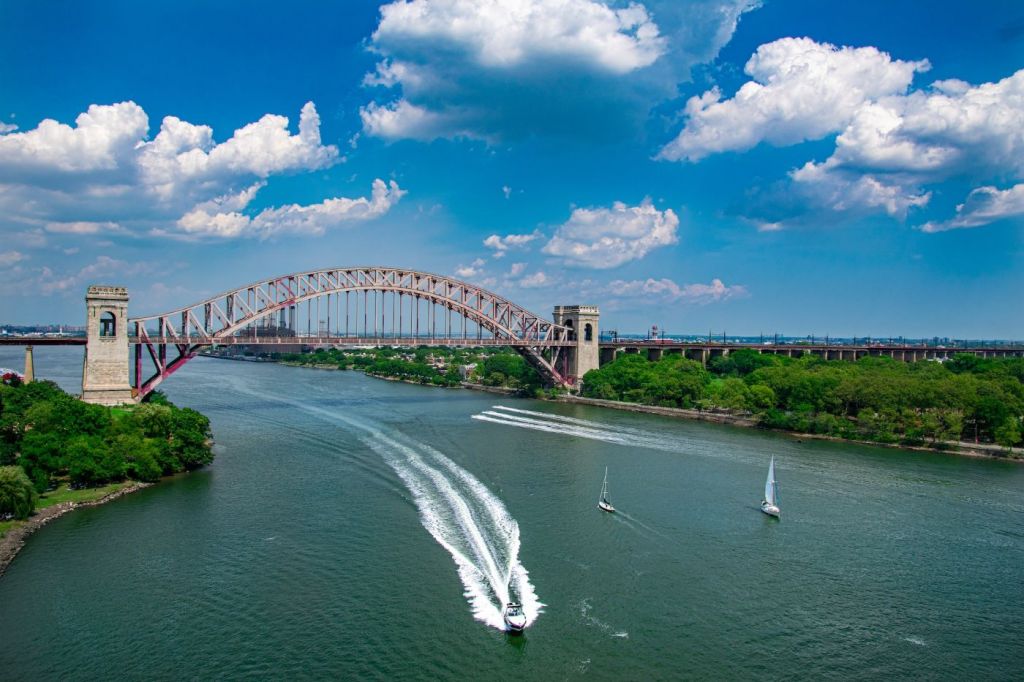
On this page:
Navigating The Hudson River With Different Types Of Boats
The table below shows how far these five different boat types can sail up the Hudson River:
| Boat type | Maximum distance on Hudson River | Size | Limitations |
|---|---|---|---|
| Kayak/canoe | 300 miles | 1-2 persons, 10-20 ft | Endurance of paddler(s) and amount of supplies they can carry on board. |
| Sailboat | 160 miles | 20-50 ft | Size of fuel tanks and the strength and direction of the wind. |
| Motorboat | 200 miles | 20-60 ft | Size of fuel tanks and the speed at which they can travel. |
| Houseboat | 150 miles | 30-70 ft | Size of fuel tanks and the speed at which they can travel. |
| Cruise ship | more than 150 miles (depending on draft size) | 100-1,000+ ft | Size of fuel tanks, depth of the river, and navigational limitations due to shallow water or low bridges. |
Paddling The River Via Canoe Or Kayak
Kayaks and canoes are small, lightweight, and easy to maneuver, which makes them ideal for exploring rivers and other bodies of water. They are also powered by human effort, so they do not require any fuel or other resources to operate.
This means that canoes and kayaks can travel long distances on the Hudson River as long as the paddler(s) have enough endurance and supplies to sustain them.
In addition, kayaks and canoes are able to navigate through shallow waters and narrow channels that may be inaccessible to larger boats, which gives them greater flexibility and range. This allows kayakers and canoeists to explore more of the Hudson River and its tributaries than other types of boats.
To sail up to 300 miles on the Hudson River, kayakers and canoeists typically take several days to complete the journey. They may camp along the riverbanks or stay in local accommodations along the way.
The journey can be challenging, as the river can be subject to strong currents, rapids, and other hazards. However, it is also a rewarding experience, as the river offers a unique perspective on the natural beauty of the region.
If you're wondering whether you need to register your kayak or canoe in New York, you can find answers to your questions in this article. If your kayak or canoe has a trolling motor, the price of boat registration can be found here.
Sailing On A Sailboat
Sailboats are a popular choice for sailing the Hudson River because they are efficient and can travel long distances without the need for fuel. Depending on the size of your sailboat, you can sail up to Albany, which is about 150 miles north of New York City.

Below are some of the reasons why a sailboat can only reach up to 150 miles on the Hudson River:
- The natural limitations of the river itself: Since the river is a tidal estuary, it is easily influenced by the tides and the saltwater from the ocean, which create strong currents and changing water levels that can make sailing difficult, especially for inexperienced sailors.
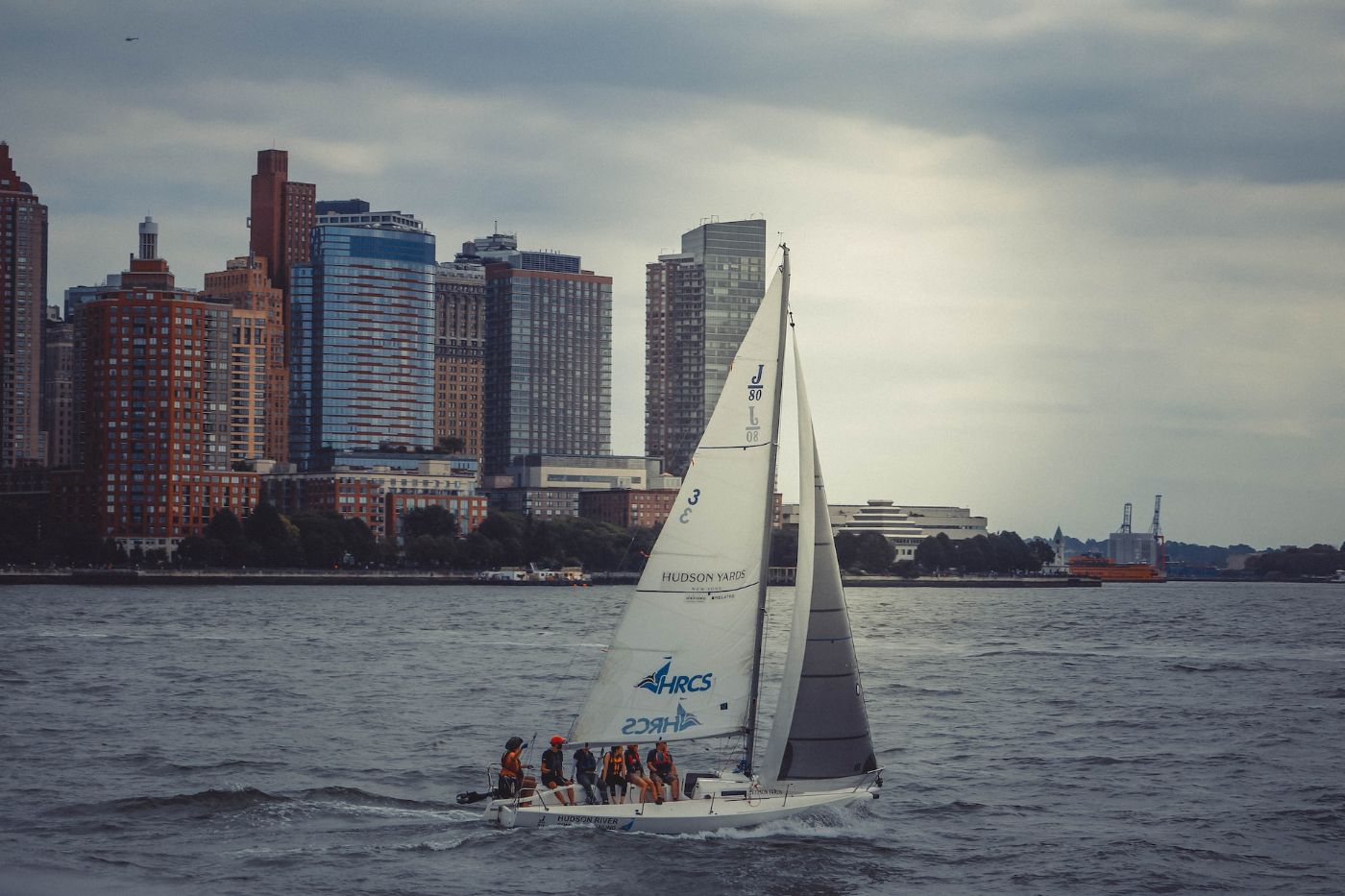
- The presence of bridges and other obstacles: The river is also home to several large bridges, including the Tappan Zee Bridge and the George Washington Bridge, which can pose a challenge for sailboats with tall masts.
- The weather and wind conditions on the Hudson River: The river can also experience strong winds and storms, which can make sailing dangerous or impossible.
If you're looking for cheap liveaboard sailboats that don't compromise quality, here's a list of a few ones you might want to consider.
Traveling Via Houseboat
Houseboats are another great option for sailing the Hudson River since they are spacious and can accommodate a large number of people. With a houseboat, you can sail up to Albany in about 2-3 days.
Some houseboats may be able to travel further than others, but as a general rule, a houseboat on the Hudson River can typically travel up to 150 miles before needing to refuel or restock supplies. Some houseboats are also not as fast as powerboats and can be affected by strong tidal currents. They can also be expensive to rent or purchase.
While a houseboat can be a comfortable and convenient way to travel on the water, it is not designed for long-distance travel. Most houseboats have a limited range and are not equipped to handle rough waters or adverse weather conditions.
Exploring Through A Motorboat
A motorboat can travel up to 200 miles on the Hudson River. However, you may need to refuel along the way, as there are limited fueling stations on the river.
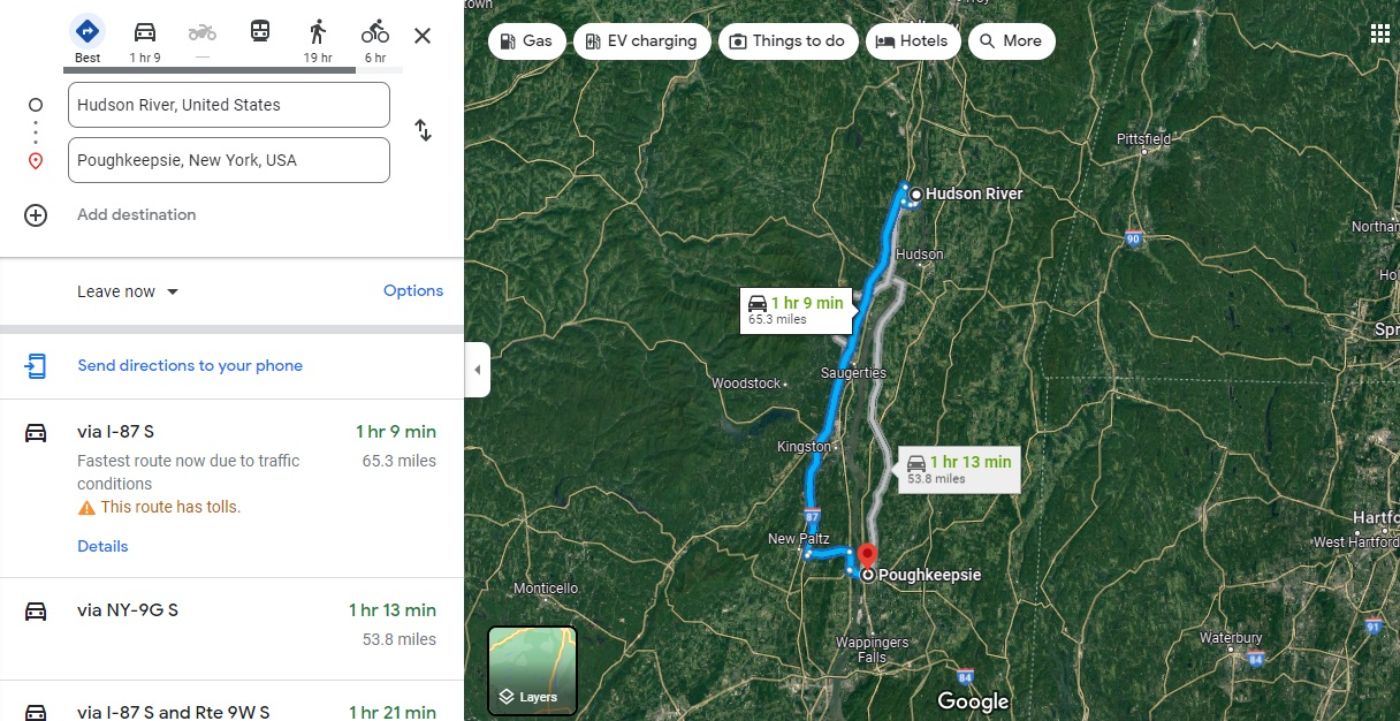
In general, a motorboat traveling up the Hudson River will have to contend with strong tidal currents, particularly as it approaches the narrows of New York Harbor. These currents can slow the boat's progress and increase fuel consumption, making it more difficult to travel long distances.
Additionally, there are several locks and dams along the Hudson River that can limit the size and draft of boats that can navigate the river. This can further restrict the range of a motorboat, particularly if it is larger or has a deeper draft.
Docking a motorboat in NYC costs around $800 to $1,800 per year. To find out how much the docking fees for other types of boats in NYC, you can take a moment to read this article.
Navigating The River Via Cruise Ship
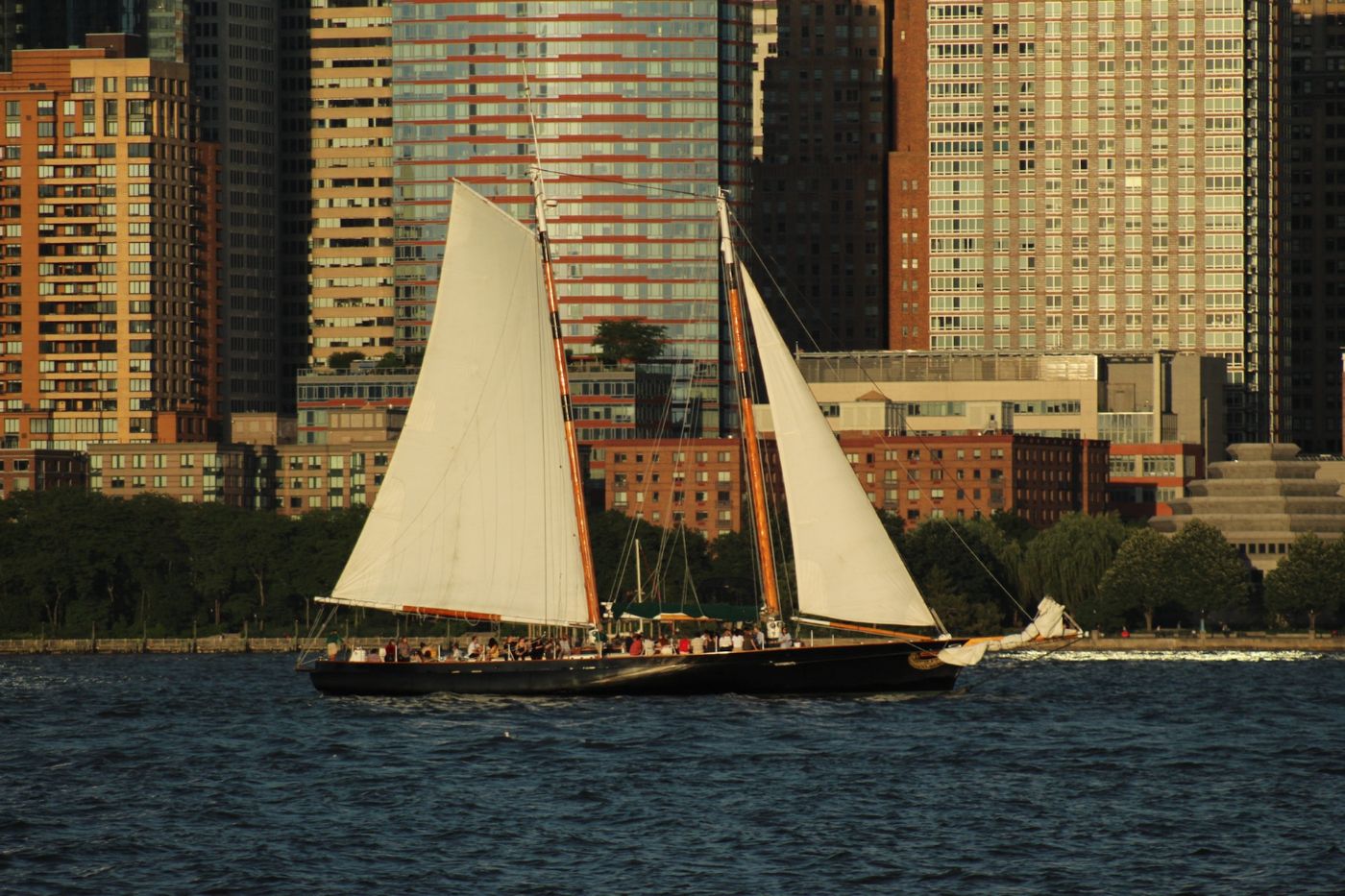
A cruise ship can travel more than 150 miles on the Hudson River, but it can be limited to the lower part of the river due to the size of the ship and its draft. The maximum draft for a cruise ship on the Hudson River is limited to about 32 feet.
While this is considered quite deep for a ship traveling on this river, which has a maximum depth of around 216 feet, it is possible for the cruise ship to sail more than 150 miles up the Hudson River as long as it stays within the navigable channel and avoids shallow areas.
Another limitation is the presence of bridges and other obstacles that can make it difficult or impossible for larger ships to pass through. Many of the bridges along the Hudson River have a low clearance, which can make it impossible for large ships to pass under them without risking damage.
Factors Affecting How Far You Can Sail Up the Hudson River
Below are some of the most important factors to consider when sailing up the Hudson River:
| Boat type | Tides | Bridge clearance | Weather conditions | Navigation skills |
|---|---|---|---|---|
| Kayak or canoe | Not a major factor | Not usually a concern for kayaks or canoes | Can have a significant impact on kayaks and canoes as they are more exposed to the elements | Navigation skills are required |
| Cruise ship | Can impact the ability of the ship to dock | A major concern for cruise ships, as they are often too tall to pass under many bridges | Can impact the safety and comfort of passengers, and may cause delays or changes to the itinerary | Navigation skills are less important as they have established routes and have advanced technology for navigation |
| Motorboat | Not a major factor | Can be a concern for larger motorboats | Can impact the safety and comfort of passengers and may affect the speed and handling of the boat | Navigation skills are required |
| Sailboat | Can be a major factor for sailboats, as they can affect the speed and direction of the boat | May be a concern for taller sailboats | Crucial for sailboats, as they rely on wind and weather patterns for propulsion | Navigation skills are essential as they often navigate using charts and landmarks |
| Houseboat | Can affect the ability of the boat to navigate certain areas | May be a concern for taller houseboats | May affect the handling of the boat | Navigation skills are required |
The tides determine how far you can sail up the Hudson River
The river experiences two high tides and two low tides every day, which can create strong currents that make it difficult to navigate. You may need to plan your journey around the tides to ensure a safe and smooth sailing experience.
Bridge clearance is another factor to consider
There are several bridges along the river that have limited clearance, so you need to know the height of your boat and the clearance of the bridges before setting sail. If your boat is too tall to pass under a bridge, you may need to find an alternate route.
Weather conditions can also play a significant role in how far you can sail
Strong winds and rough seas can make it difficult to navigate, while calm conditions can make for a smoother sailing experience. Always try to check the weather forecast before setting sail and be prepared to adjust your plans accordingly.
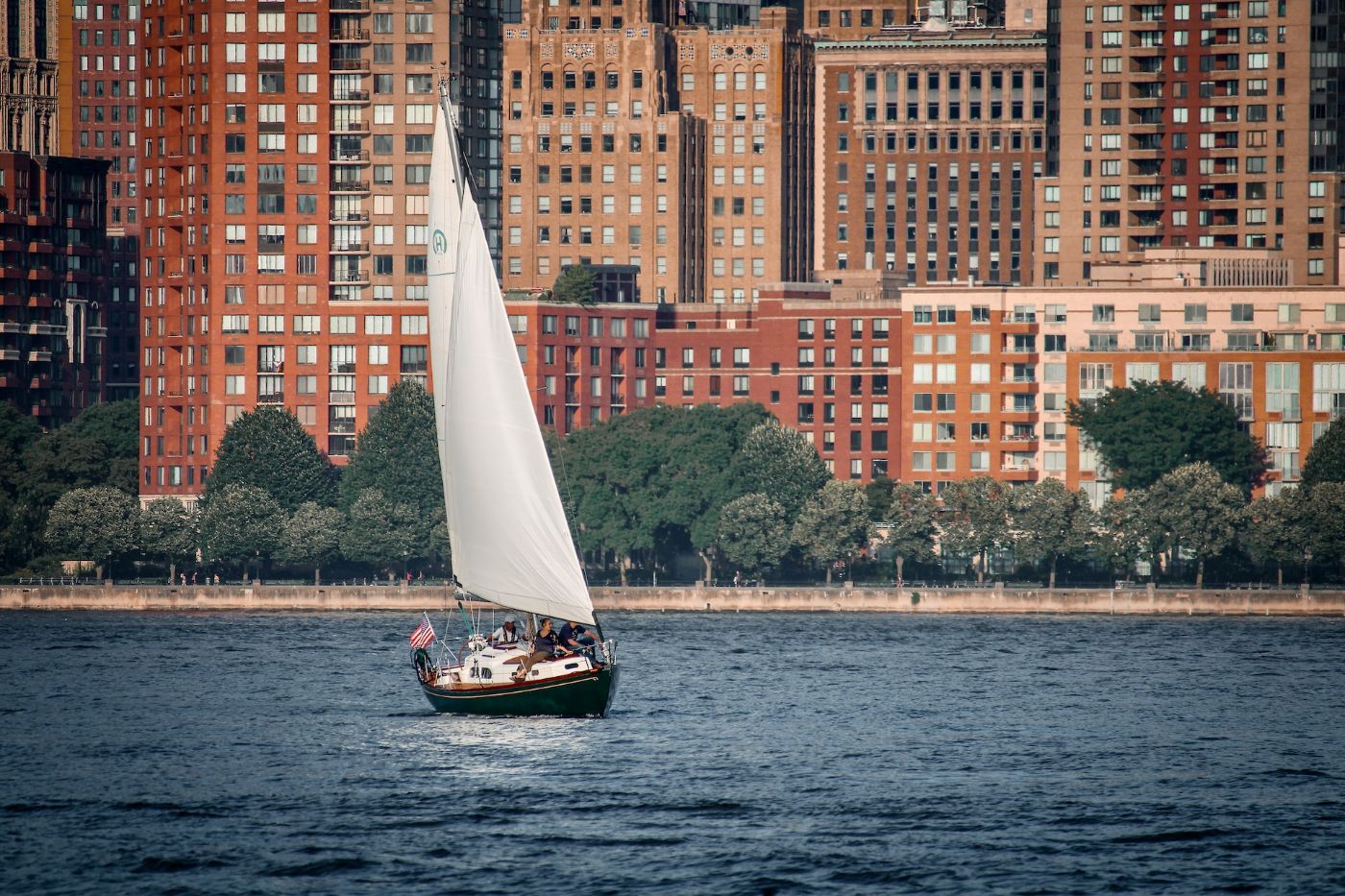
Your navigation skills can also affect your sailing distance
Navigating a river can be more challenging than sailing in open waters, as there are more obstacles to avoid and more factors to consider. You are required to have the necessary skills and experience to navigate the river safely and confidently. You can quickly learn to sail by following the tips in this article.
Did you find the answer to your specific question?
👍 1 👎 0


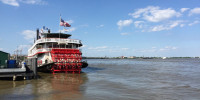

Leave a comment